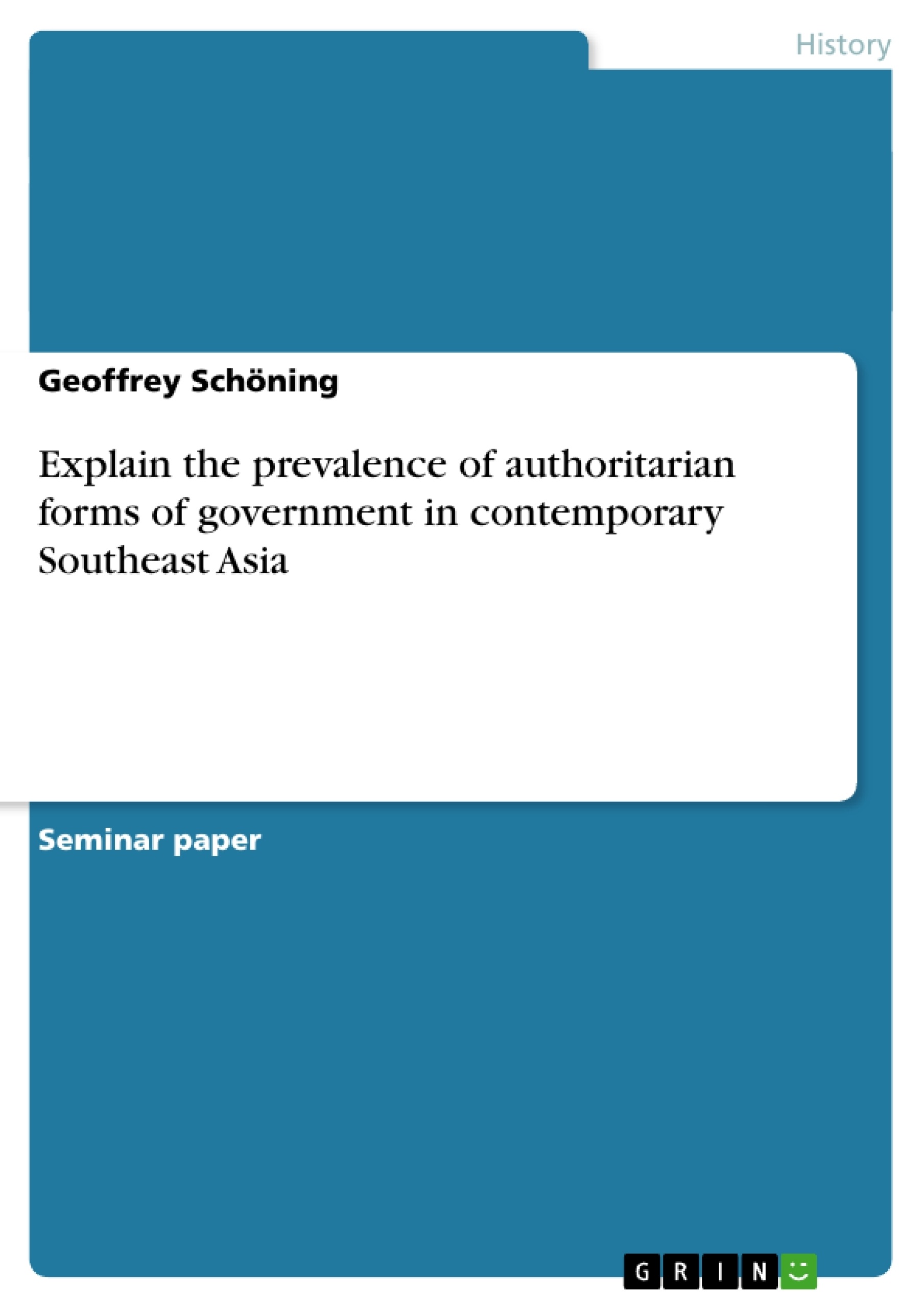“If democracy means to carry gun; to flaunt homosexuality; to disregard the institution of marriage; to disrupt and damage the well-being of the community in the name of individual rights; to destroy a particular faith; to have privileged institutions such as the press which are sacrosanct even if they indulge in lies which undermine society – if these are democracy’s details, cannot the new converts reject them?”1
For sure, they can and have done so – all over the world. The first associations in face of such a statement, however, tend to point towards Latin-American Generals or Caribbean dictators à la Papa Doc rather than to the actual author of this tirade against western political values. Interestingly enough, it was the ruling head of a Southeast Asian nation recently referred to as semi-democratic2 who came to the conclusion stated above:
Prime Minister Mahathir of Malaysia, defending his form of government at a plenary session of the United Nations in 1991, uttered it. Indeed, there is good reason to assume that countries like Indonesia, Singapore and possibly Thailand would unanimously chime in with him, even though they too are considered semi-democracies or even proper ones, as is the case for Thailand and Indonesia.3
Without analysing the matter of local authoritarianism itself, it turns out quite clearly that some preliminary notes need to be made before one can substantially deal with the region and its political systems. What is democracy, and ,consequently, what is authoritarianism contrasted to it? Of course, there is no definition valid in all parts of the world; Matathir’s quotation speaks volumes in this respect. Nevertheless, in the western- dominated societies at least, democracy could be defined as “that system of community government in which, by and large, the members of a community participate, directly or indirectly, in the making of decisions which affect them all.”4
Further adjustments can then be made, such as the guaranteed competition of candidates for elective offices or the recognition of of civil and political liberties by the government.5 Given this admittedly rough picture of basic democratic principles, authoritarian rule appears wherever genuine citizen participation is restricted or, in the worst case, prohibited, and where civil liberties are curbed.6 Such a distinction is naturally far from being clear-cut, and can only be made gradually. Thus, although the forms of government
[...]
Inhaltsverzeichnis (Table of Contents)
- Prevalence of Authoritarian Forms of Government in Contemporary Southeast Asia
- Democracy and Authoritarianism in Southeast Asia
- Defining Democracy and Authoritarianism
- The Role of the Executive, Legislative and Judiciary in Southeast Asia
- The Cultural and Political Landscape of Ancient Southeast Asia
- The Dualism of Ideas: Sinic and Indianised Cultures
- The Significance of Personal Rule and Centralisation
- The Legacy of Pre-Colonial Power Structures
- The Impact of Colonialism on Southeast Asia
- Direct Versus Indirect Rule
- The Rise of Western-Trained Elites
- Social and Cultural Involution
- The Influence of Colonial Education and Political Values
- The Ideological Legacy of Colonialism: The Nation-State Ideal
- The Concept of “Imagined Community”
- Nationalism and Assimilation of Minority Groups
- The Impact of Colonial Boundary Mapping
Zielsetzung und Themenschwerpunkte (Objectives and Key Themes)
This text explores the prevalence of authoritarian forms of government in contemporary Southeast Asia, examining the historical and cultural factors that contribute to its persistence. It aims to provide an understanding of the region's political landscape, analyzing the interplay between democracy and authoritarianism in the context of Southeast Asia's unique history and cultural heritage.
- The evolution of democratic and authoritarian practices in Southeast Asia.
- The impact of pre-colonial cultural and political structures on modern governance.
- The influence of colonialism on the development of Southeast Asian elites and political systems.
- The role of the nation-state ideal and nationalism in shaping political dynamics.
- The interplay between historical legacies, cultural factors, and contemporary political realities in the region.
Zusammenfassung der Kapitel (Chapter Summaries)
The first chapter delves into the definition of democracy and authoritarianism, highlighting the specific challenges of applying Western-centric concepts to Southeast Asia. It examines the role of the executive, legislative, and judiciary branches of government in shaping political dynamics, particularly in the context of strong states and powerful officials. The chapter then examines the cultural and political landscape of pre-colonial Southeast Asia, contrasting the Sinic-influenced North with the predominantly Indianised South-West. The focus is on the significance of personal rule, centralisation, and the legacy of pre-colonial power structures in shaping modern political practices. The text then analyzes the impact of colonialism, particularly the distinction between direct and indirect rule, on the development of elites and political systems. It examines the rise of Western-educated elites, the social and cultural involution resulting from indirect rule, and the influence of colonial values. The chapter concludes by exploring the ideological legacy of colonialism and the emergence of the nation-state ideal in Southeast Asia, highlighting the complex interplay of ethnic consciousness, popular sovereignty, and nationalism.
Schlüsselwörter (Keywords)
This text focuses on key topics such as authoritarianism, democracy, Southeast Asia, colonialism, nation-state, nationalism, cultural influences, pre-colonial structures, political elites, and the impact of historical legacies on contemporary governance.
- Quote paper
- Geoffrey Schöning (Author), 2002, Explain the prevalence of authoritarian forms of government in contemporary Southeast Asia, Munich, GRIN Verlag, https://www.hausarbeiten.de/document/11031


